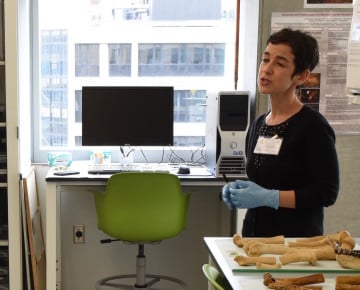
Shannon McFarlin
Earlier this fall The Leakey Foundation’s board of trustees, staff and friends had the pleasure of visiting the Center for the Advanced Study of Human Paleobiology (CASHP) at The George Washington University. CASHP is a multidisciplinary research center dedicated to the study of human origins, and lucky for us, students and faculty of CASHP were kind enough to give us an extensive tour of their labs now located in an impressive new facility. Paddy Moore and I also took the opportunity to touch base with current and former Leakey Foundation grantees studying at the center, and so we sat down with Shannon McFarlin, assistant professor of anthropology and director of the Hard Tissue Biology Laboratory at CASHP.
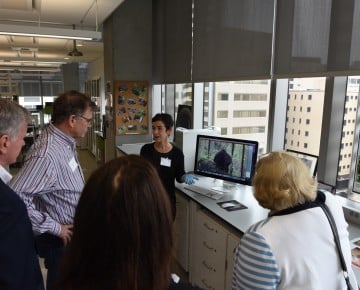
McFarlin discussing her research with trustees of The Leakey Foundation
The Leakey Foundation awarded Shannon McFarlin a Leakey Foundation Research Grant in the spring of 2013 for her project entitled “Growth and life history of wild mountain and western gorillas: Rwanda and Congo.” In this project, she and her team are studying the physical ontogeny or development of wild gorillas in order to get baseline data on how fast mountain gorillas grow to adult size, how they invest in growing and developing, and how this relates to aspects of their behavioral and reproductive maturation. They are trying to flesh out a comparative framework for understanding human life history evolution by shedding more light on great apes and how their histories vary between species with different diets and social behaviors.
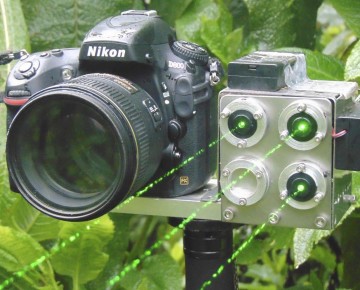
Photogrammetry is not as complicated as it might sound. In fact, the principle behind the method is quite simple. Take laser pointers separated at a certain distance and place them on a nice, weatherproof camera. When you point the camera at the subject, green dots appear on the subject at a known distance apart. By taking multiple photos of different parts of the body of the subject, you are able to accurately measure it.
The Leakey Foundation funded the pilot study and the implementation (first year of data collection) in the field. After validating the accuracy of the method at Zoo Atlanta by comparing actual physical measurements (like with a tape measure) with the remotely acquired measurements (photogrammetry), they implemented the method in the field on Virunga mountain gorillas at the Karisoke Research Center in Rwanda. Because these gorillas are almost entirely folivorous (leaf-eating), they represent a dietary extreme amongst the great apes. They are also characterized by earlier ages at weaning, earlier age at first birth and a higher fertility compared to more frugivorous (fruit-eating) western gorillas, and so this population is well suited for testing hypotheses about growth and life histories of great apes.

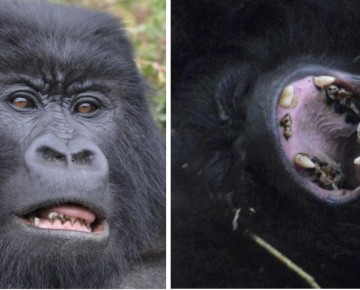
Images for assessment of dental eruption status are also collected.
What has been accomplished? The team has been taking measurements over time on 120 gorillas, half of which are still in the growing stages, and this data collection continues! In fact when we visited GWU, Jordi Galbany, the postdoctoral scientist who takes the majority of the photography for the project, was in the field in Rwanda taking pictures and sending the good ones to McFarlin using semi-reliable internet connections in Africa.
As a result of the pilot study and initial results from the field, McFarlin and her team were able to acquire an NSF grant to continue data collection an additional three years (total of five) and increase the density of behavioral sampling at Karisoke. As you can see, there is certainly so much information forthcoming from this project, and it is quite satisfying to witness first-hand the results of The Leakey Foundation’s tradition of funding exploratory phases of promising new research projects. We look forward to hearing more!
We would like to thank Shannon McFarlin and her team for taking the time to meet with us!
The following is a copy of the poster the team presented on the results of this Leakey funded project at this year’s AAPA meeting in St. Louis. Click here to download the full PDF.



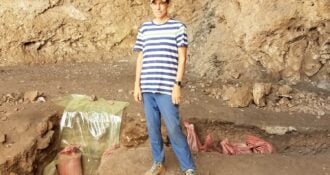
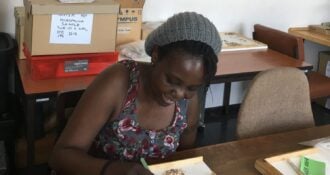
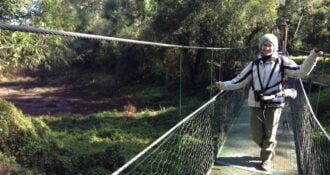

Comments 0